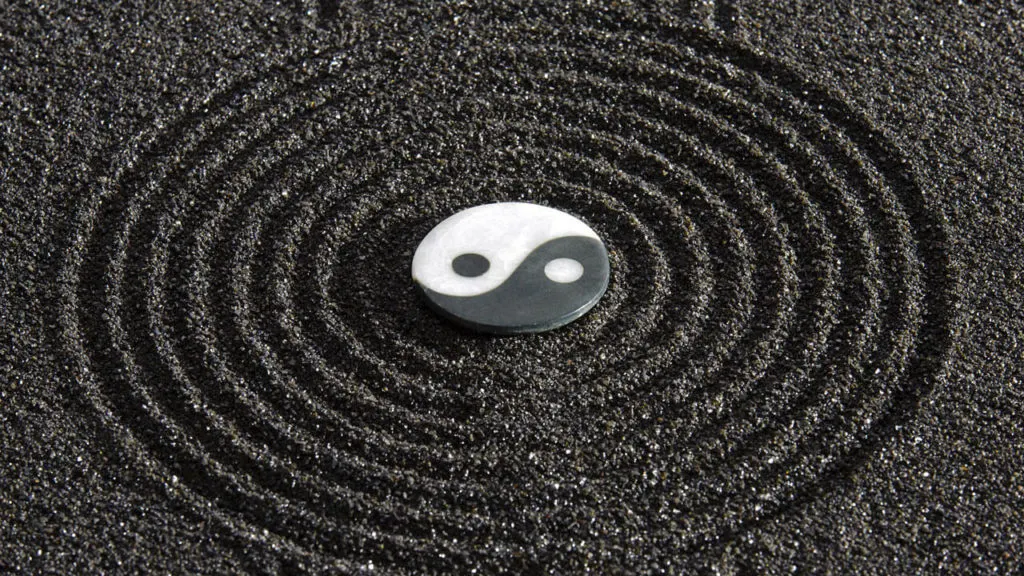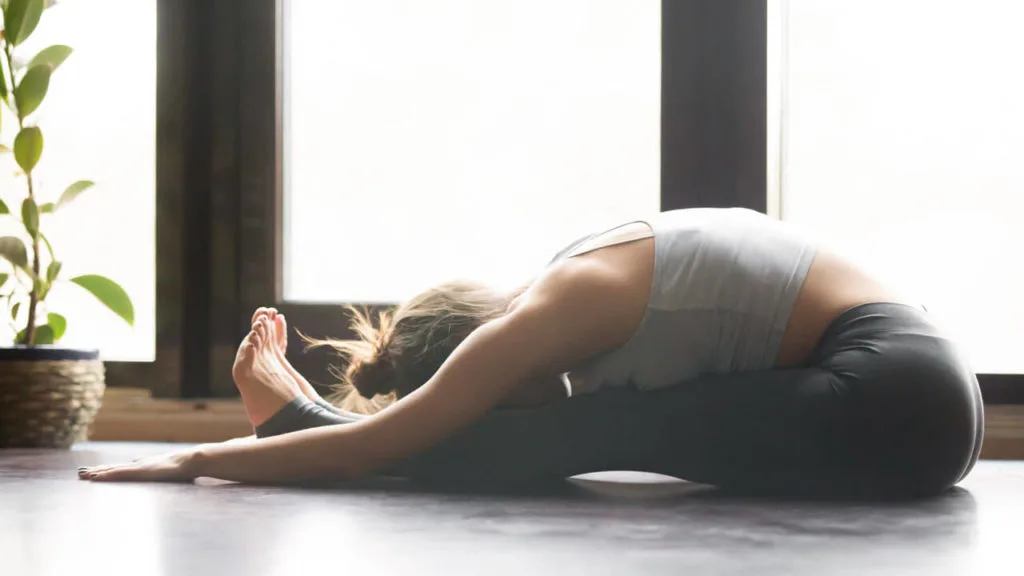Before I started practicing yin yoga I was guilty of believing some of these myths. My introduction to yin was a wake-up call that challenged and transformed me, physically and mentally. Now, as a yin yoga teacher, I have the knowledge to explain exactly why these misconceptions are around and science to back me up.
1. Yin yoga and restorative yoga are the same
Nope! While these practices may seem similar, they are actually quite different. Their similarities stop at both being quiet, contemplative yoga styles that use props. Yin yoga’s focus is to stress the body’s connective tissue, called fascia, in a healthy way. Restorative yoga’s purpose is to completely relax the body with no stress whatsoever.
The key difference between these two styles is that restorative is passive, yin is not. Restorative uses props to cradle the body, yin uses props to support the body.
2. Yin is easy and best for beginners
This is by far the most common myth I hear about yin yoga, especially from those who have never practiced it before. Because yin requires little movement and strength, it’s automatically believed to be easy. However, turning inwards, connecting with your thoughts, and listening to your body are in reality more difficult for many!
The challenge of yin is being still and releasing any holding. This may seem unnatural for you and cause discomfort. But one of the principles of yin is moving to your edge, the space just after your comfort zone and before injury. This happens both on a physical and mental level.
Beginners may come to a yin yoga class with the expectation that it will be easy and be disappointment when it’s not. Yin yoga is simple, but not necessairly easy to do. Beginners are welcome to join yin yoga but be aware that it is a subtle slow class that will challenge you. It’s meant to! As Bernie Clark, one of the leading teachers of yin yoga says, “If you are feeling it, you are doing it!”
3. Yin targets your muscles
As familiar as you may be with yin yoga, did you know that it’s not actually your muscles you’re aiming to stretch? Your deep connective tissue is the target of yin yoga. This tissue runs all through your body in a weblike structure that encompasses your muscles, joints, ligaments, tendons, and nerves. In other words, fascia is everywhere.
In an active yang style yoga class your muscles are the star of the show and exercised through repetitive movements. This is great because yang-like parts of your body (your muscles) need to be exercised in yang-like movements.
In yin yoga, the aim is to move the focus away from the muscles and into your joints to increase the flexibility of the joints themselves. Your joints are yin-like and need yin-like exercise to maintain or improve their health. It takes an average of 90 seconds to access your fascia and begin to open the body. This is why yin follows the principles to hold the pose and be still.
4. Alignment doesn’t matter in yin
Alignment still matters in yin…but not how you think. Bernie Clark greatly emphasizes functional alignment instead of alignment for aesthetic purposes which many active styles demonstrate and strive for.
I guide my students into yin poses but give many variations so that they can find the best option for their bodies. This way students like you can be in a pose that is not only more comfortable but easier to hold for longer periods of time.
Yin yoga takes into account that you most likely have a very different body and anatomy structure than mine. Your bones could cause physical limitations in certain poses than mine do or vice versa. What’s noticeable is yin is that it gives you the opportunity to explore a pose and how to make it fit to your body. That’s your alignment, not what your yoga teacher says.
5. Yin is for people who are lazy

Is yin the answer to becoming physically fit? No. But as a yin yoga teacher, I’d argue that yin yoga is even more important for people who move their bodies on a regular basis than it is for those who spend more of their time sitting. That being said, I believe and recommend that all should practice yin.
Yin is more about balance than it is about physical health. Not only does yin target a different area of the body compared to active styles of yoga or fitness, but it’s essential to balance your mind and energy levels as well.
Will yin help with your physical body? Yes! Including yin into your exercise routine is a great addition (or shall I say yinddition) because of the added physical benefits and energetic or spiritual. The yin yang sign is the example of balancing these energies together. Just like you shouldn’t only practice yin. You also shouldn’t only practice active styles. If you want to avoid injuries, increase flexibility, and cultivate a calmer mind, you’ll understand that yin is far from being a practice for those who are “lazy”.
6. Yin is perfect for those healing from injuries
Combine the belief that yin is an easy practice and the fact that it’s a style with minimal movement, and you might think that yin is a no-brainer to help people heal. However, the opposite is true. Yin is still an active practice for your body. Stress is being put onto the body, specifically the joints, and can cause damage to areas that may be healing.
Depending on where your injury is and what process it’s at in its healing journey yin may not be a good idea. However, some movement and stress can be good for injuries. Sitting still and doing nothing does not help the injury heal forever! Restorative is a better-suited practice to come back to yoga, followed by yin, and then active styles.
7. Yin causes overstretching in the joints and ligaments

There is an important difference between the words stress and stretch that you might miss when you hear that yin stresses the joints. Stress does not equal stretch. When you stress your joints you are applying force. When you stretch your muscles you are lengthening. When you place healthy and moderate stress onto your joints you are not necessarily causing a stretch in the muscles.
The goal of yin is to be extra mindful and to listen to your body. If you come in and go deep quickly the force applied may lead to an injury or over-stretching. If you come into a pose slowly you give your body ample time to give you signals, such as pain or pinching, so you know when to stop or back off.
Injuries often happen because of not listening to your body and lack of patience.
8. Yin is dangerous if you’re pregnant
When pregnant all yoga styles should be adapted for your quickly changing body and hormones. The hormone relaxin is often a big concern when it comes to yin yoga because it helps to relax ligaments in the body as it gets ready for birth.
This means that your edge will be further and you may notice more flexibility in your joints, but it does not mean that you should push to this newfound edge. If you are a regular yin yoga practitioner before pregnancy, follow your edge or flexibility levels from before you got pregnant. If you come to yin for the first time during your pregnancy, be mindful of not pushing too far. Use extra props to support yourself to avoid holding yourself so you may properly relax your muscles.
As with any other style of yoga, certain poses, depending on the trimester you’re in are recommended to avoid. Deep twists and laying on your belly are important notes to remember to adapt your yin yoga practice to pregnancy.
What’s next?
- Practice yin yoga with me on YouTube!
- Want to teach yin? See my recommended yin teacher training.

